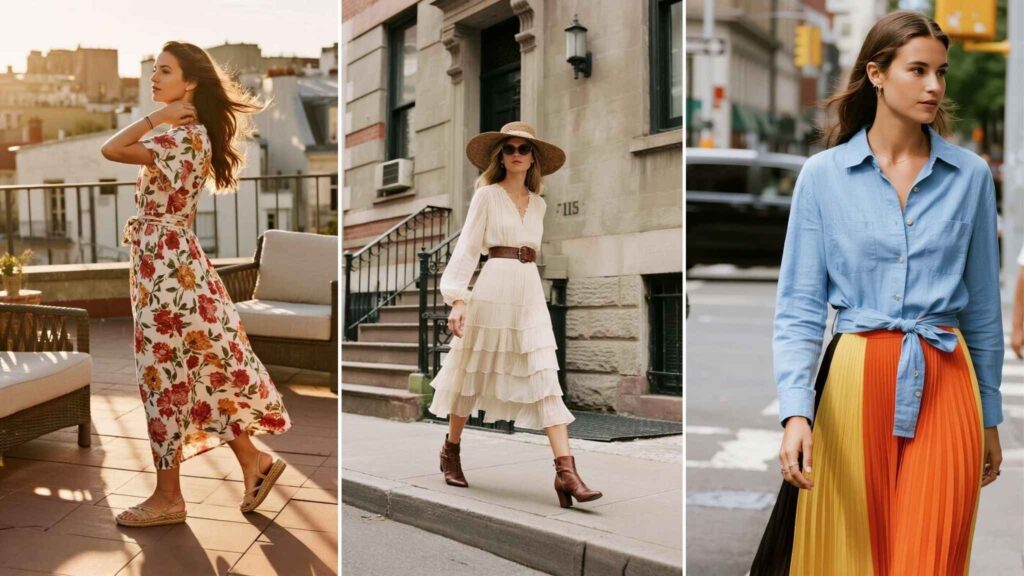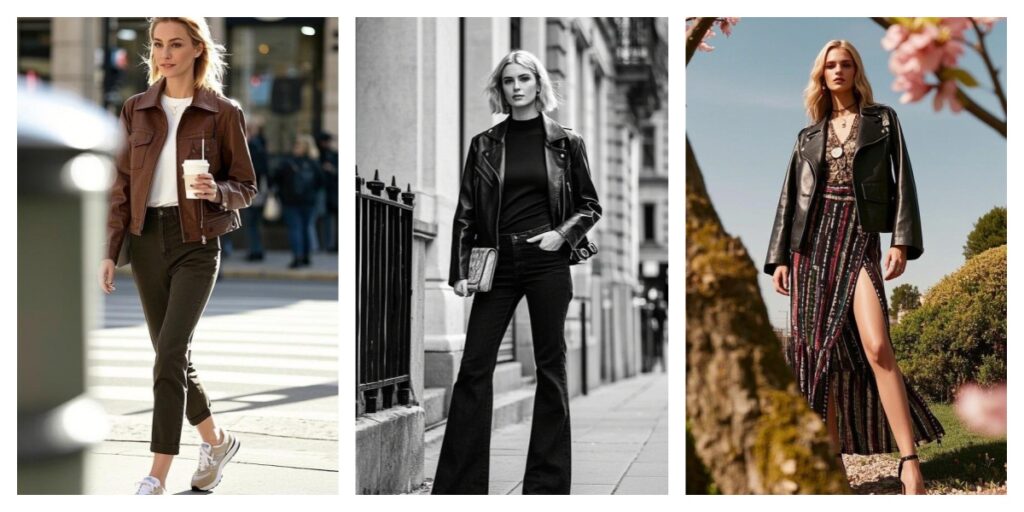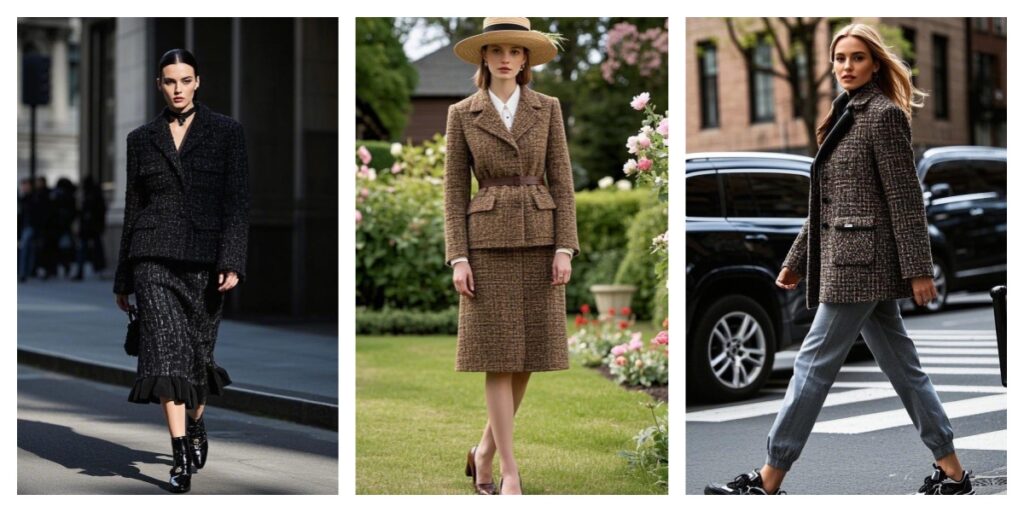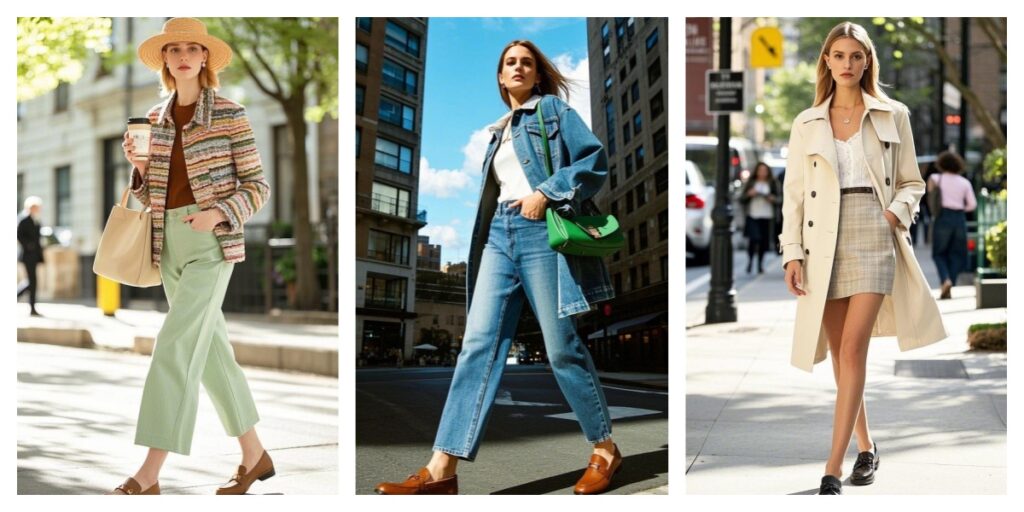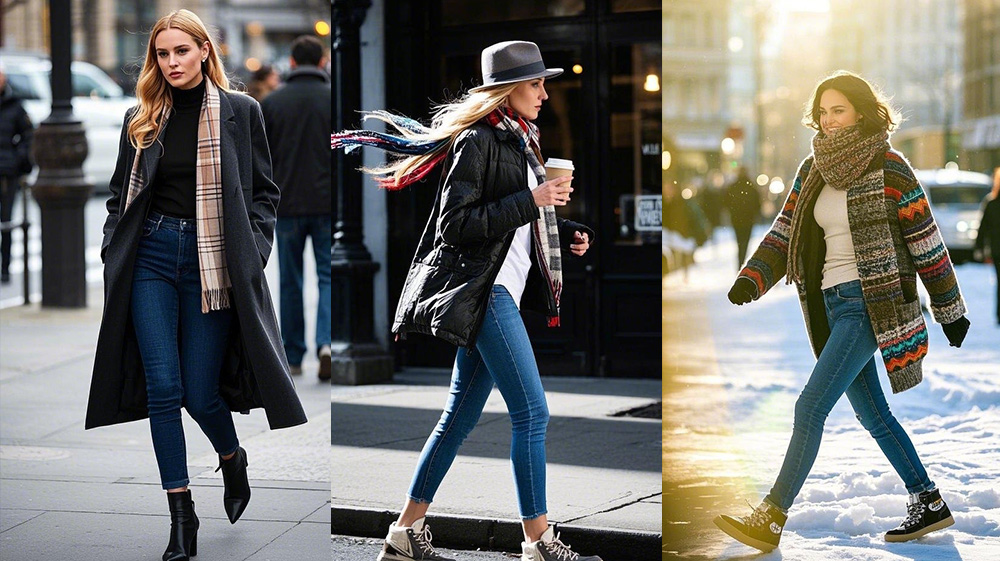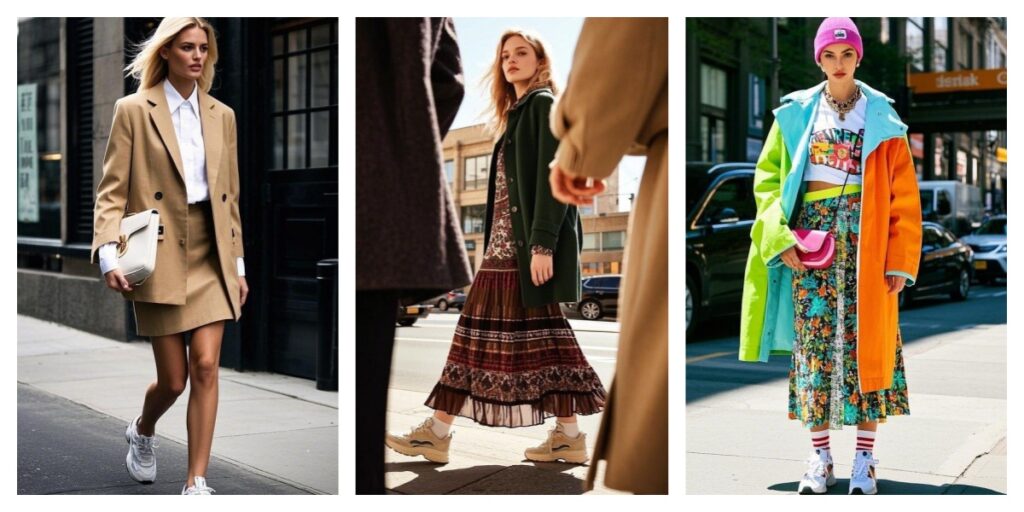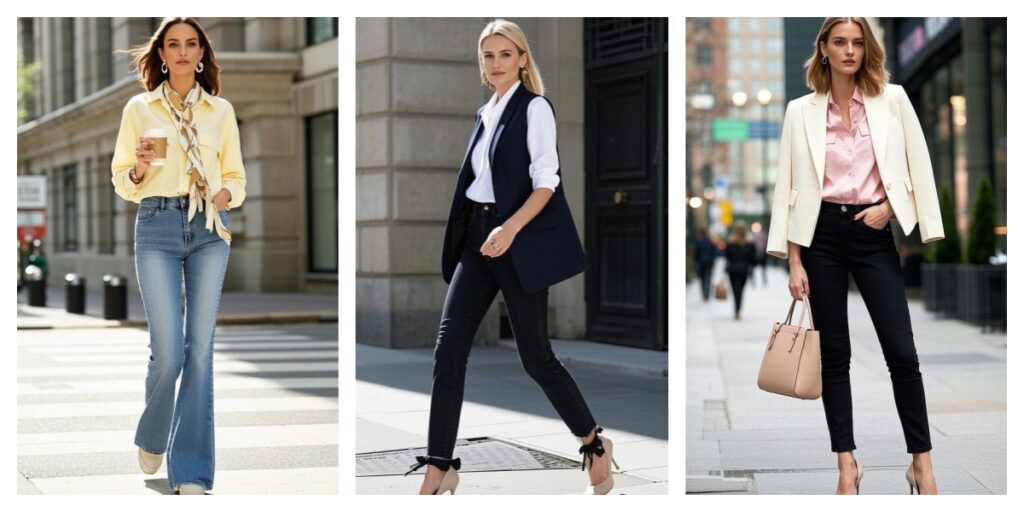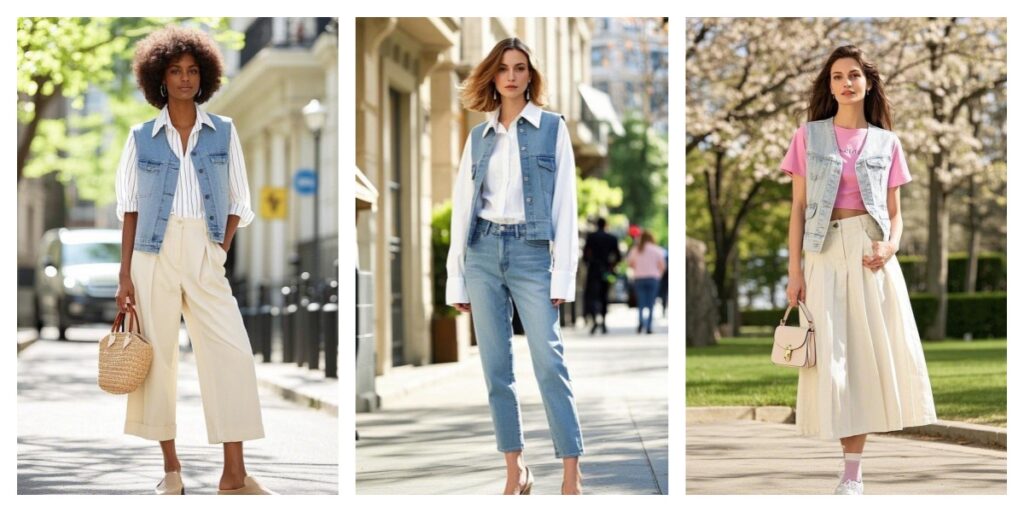Introduction
The maxi dress has earned its place as a perennial favorite in women’s fashion for one simple reason: it unites runway‑worthy elegance with secret‑pajama comfort. Whether it’s fluttering at a beach wedding or anchored under a leather jacket for brunch, the ankle‑grazing silhouette feels relaxed yet refined—proof that style doesn’t have to pinch or pull to look polished. This article dives into why maxi dresses flatter so many shapes, then delivers targeted styling hacks for every body type so you can wear yours with maximum confidence
Understanding the Maxi Dress: Why It Works for Almost Everyone
Maxi dresses succeed where other “one‑and‑done” garments struggle: they create a long, uninterrupted vertical line, which visually lengthens the body and skims over areas many women prefer to keep under wraps.
- Versatility across seasons: Breezy cotton or linen keeps you cool in August, while jersey knits, ribbed sweater dresses, or long‑sleeve chiffon cuts layer effortlessly over tights, boots, and a cropped jacket in cooler months.
- Fabric, cut, and length: Lightweight fabrics with fluid drape melt over curves without clinging. Strategic side slits offer ease of movement and reveal just enough leg to avoid a “fabric tent” effect.
- Built‑in ease: Many maxis employ elastic backs, smocked bodices, or tie waists that let you adjust fit on the fly—ideal for post‑lunch comfort or fluctuating sizes.
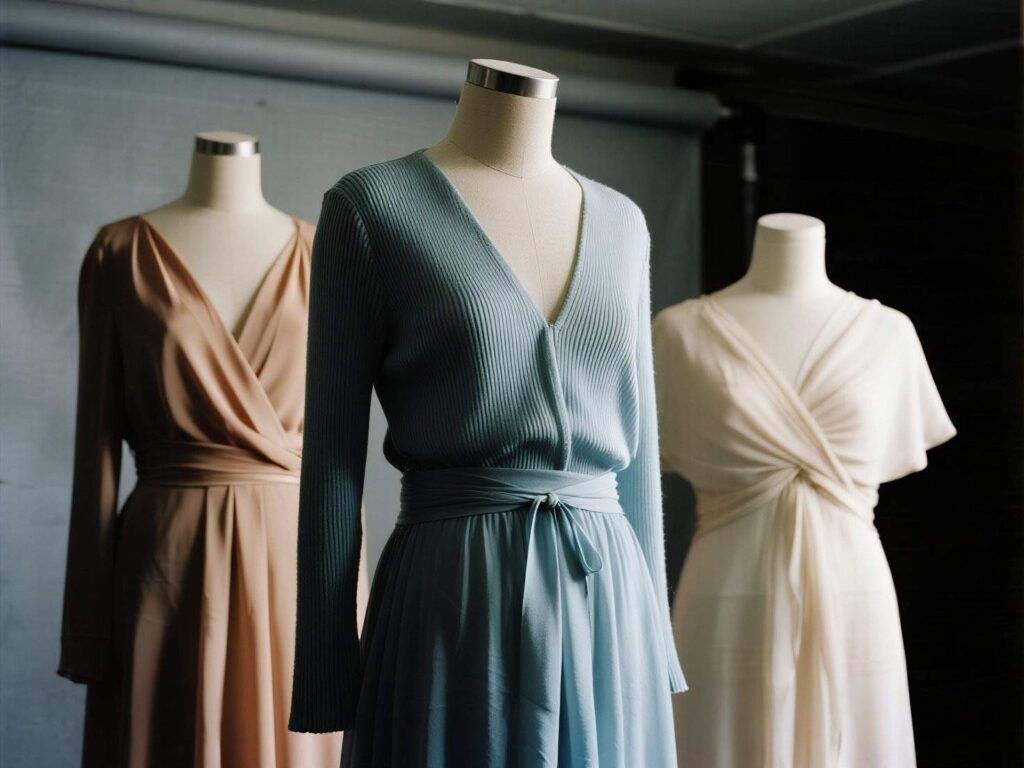
All of these factors make the maxi less of a trend piece and more of a wardrobe backbone: pull‑on simplicity with room to personalize.
Styling Maxi Dresses for Petite Women
Petite frames (typically 5’4″ / 163 cm or under) often fear maxi lengths will “swallow” them. With a few smart tweaks, the look elongates instead of overwhelms.
- Mind the hemline: Aim for a hem that almost kisses the top of your foot—long enough to maintain that sleek column but short enough to show your shoes and avoid a tripping hazard.
- Choose vertical details: Think micro‑florals arranged in vertical rows, slim stripes, or a subtle center‑front slit that draws the eye upward.
- Opt for high waists: Empire cuts (where the waistline sits just under the bust) create instant leg length. A wide self‑tie belt in the same fabric also does the trick without interrupting the vertical line.
- Footwear that lifts: Espadrille wedges, platform sandals, or low‑block heels provide height without the teeter of stilettos. Nude tones matching your skin or shoe colors that echo the dress keep the line unbroken.
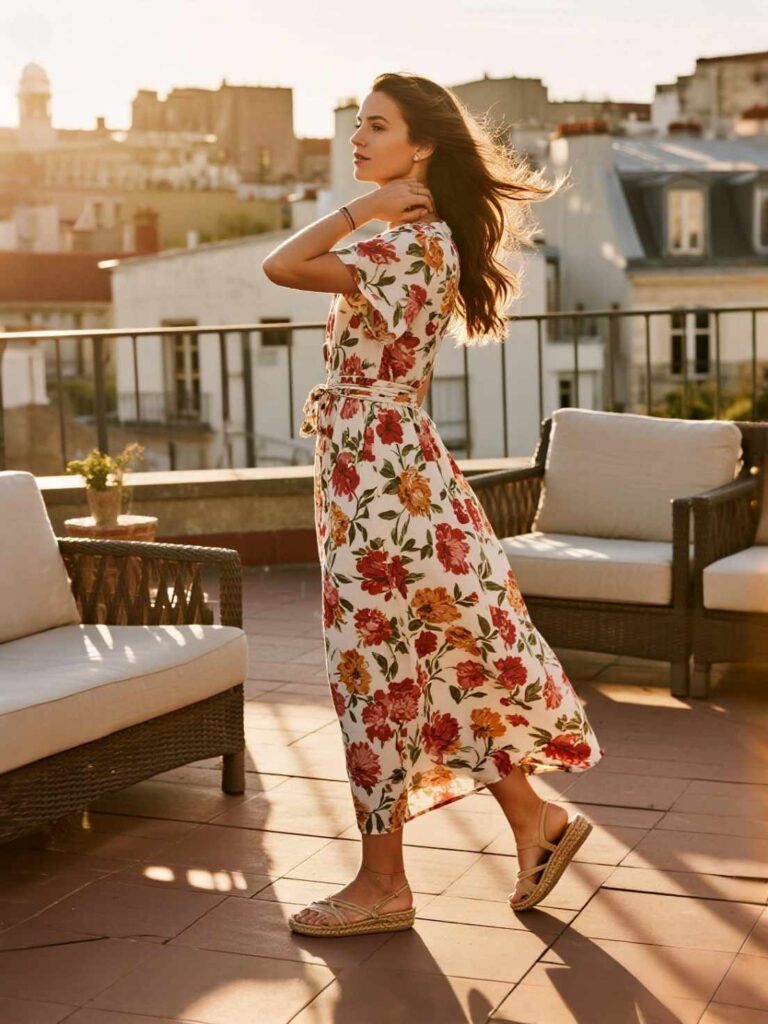
Styling Maxi Dresses for Tall Women
Tall figures often flirt with the opposite problem: garments that look unintentionally cropped. Maxi dresses are your playground for drama.
- Lean into bold prints: Large florals, graphic geometrics, or color‑blocked stripes complement the extra surface area of a tall frame without feeling busy.
- Experiment with hemlines: High‑low cuts, tiered ruffles, and even a touch of train add movement and showcase long legs when you walk.
- Define the waist: A statement belt in leather or contrasting fabric prevents a column of fabric from looking shapeless. Position it at your natural waist or slightly lower to break up vertical length pleasantly.
- Scale accessories appropriately: Oversized straw hats, wide cuffs, or layered chain necklaces balance stature and keep a maxi from reading too simple.
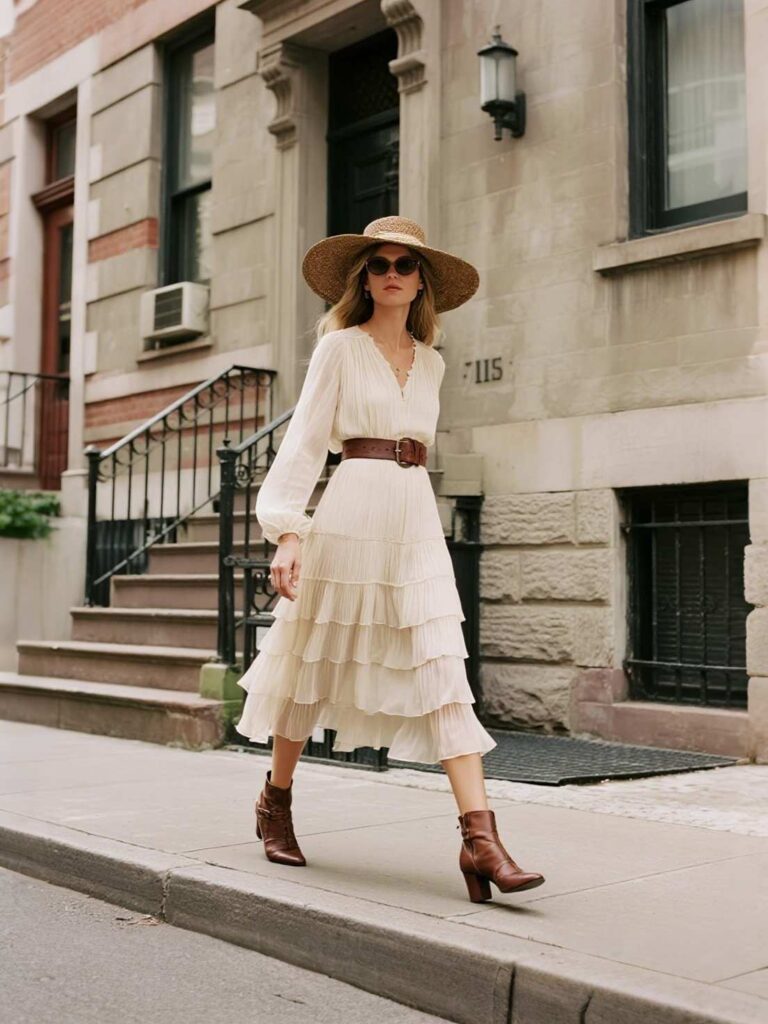
Styling Maxi Dresses for Curvy and Plus‑Size Women
The maxi dress can be a confidence booster for curvy silhouettes when you focus on structure and flow in equal measure.
- Seek defined waists: Wrap styles, faux‑wraps, or elastic shirred waists outline curves without clinging uncomfortably. A‑line skirts that skim hips and flare gently at the hem offer graceful movement.
- V‑necks and surplice tops: These necklines create a vertical focal point, elongating the torso and framing the face.
- Avoid fabric overload. While voluminous boho maxis are trendy, too much fabric can blur curves. Choose medium‑weight materials that drape rather than balloon.
- Strategic layering. Lightweight denim jackets, cropped cardigans, or structured blazers cut at or slightly above the hip define shoulders and waist, emphasizing hourglass shape.
- Supportive undergarments: A well‑fitted bra or smoothing slip can transform how a dress hangs, ensuring the design—not unwanted lines—takes center stage.
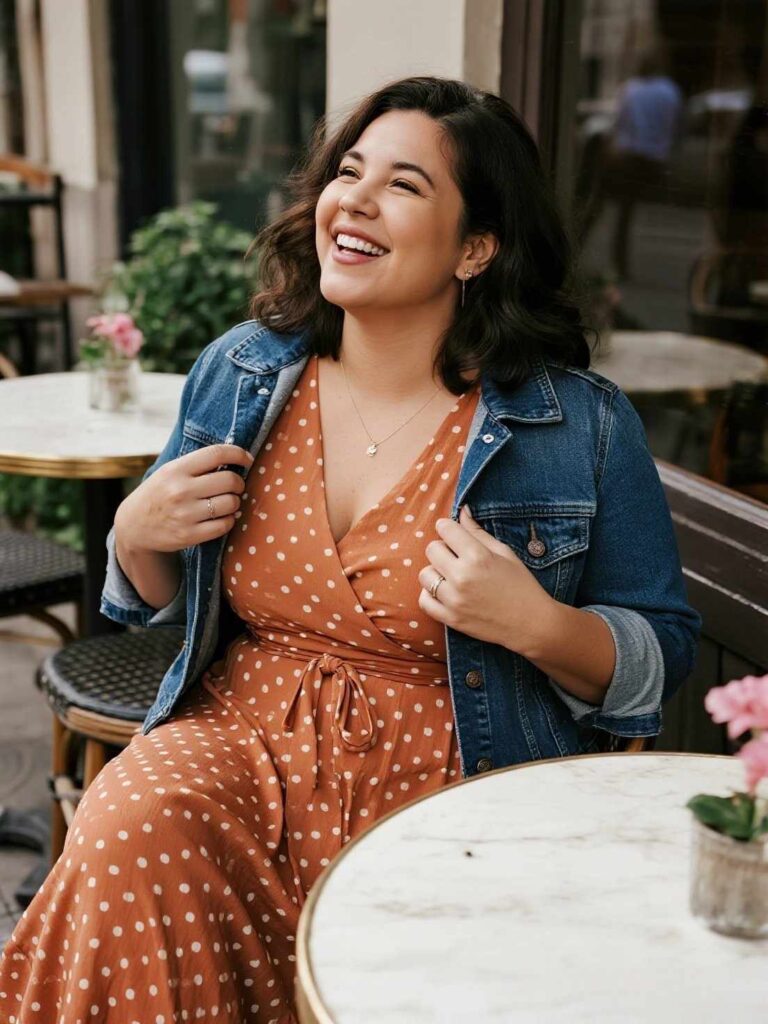
Maxi Dresses for Straight or Athletic Body Types
Athletic or rectangular shapes (shoulders and hips roughly same width, minimal waist definition) can use design tricks to suggest curves.
- Look for volume and texture: Ruffled tiers, pleated skirts, or crinkle gauze add dimension.
- Cinched middles: Smocked bodices, elasticized waists, or wide obi belts visually reduce waist circumference.
- Playful necklines: Halters, sweetheart cuts, or off‑shoulder designs broaden or highlight shoulders, setting the stage for a curvier silhouette.
- Strategic pattern placement: Horizontal bands at the hip or bust, color‑blocking panels, or large‑scale florals at the side seams build the illusion of shape.
- Layer creatively: A cropped moto jacket or knotted chambray shirt at the waist shortens the torso and emphasizes an hourglass line.
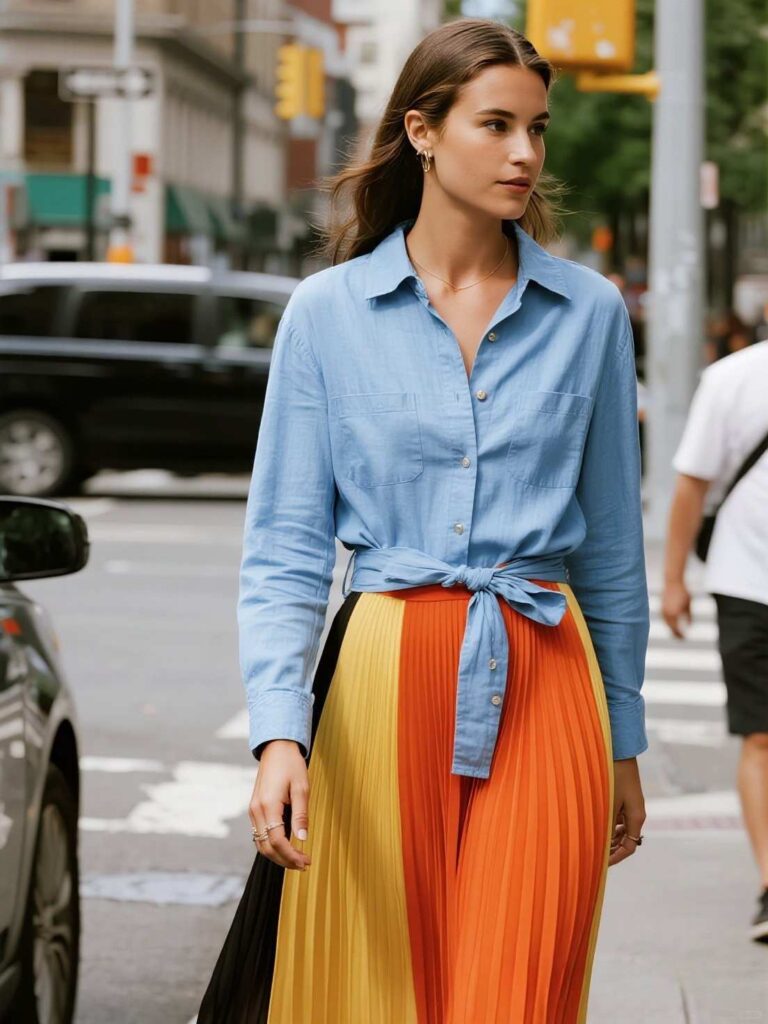
Universal Styling Hacks to Make a Maxi Dress Flatter
Regardless of your body type, a handful of guidelines ensure your maxi looks intentional and elevated rather than thrown on.
- Neckline know‑how:
- Petite & short necks: scoop, V‑neck, or surplice styles open up the décolleté.
- Full bust: square or wrap necklines contain volume while showcasing curves.
- Athletic shoulders: one‑shoulder or halter styles highlight toned arms.
- Undergarment essentials: Invest in a seamless nude slip for lighter fabrics, strapless‑friendly bras for tricky necklines, and high‑waist smoothing shorts if you prefer extra coverage beneath sheers.
- Seasonal layering cheat‑sheet:
- Spring: light denim jacket or cropped cardigan; ankle boots or sneakers.
- Summer: wide‑brim straw hat, flat strappy sandals, and statement sunnies.
- Autumn: longline cardigan or utility jacket; ankle booties; printed scarves for a pop of pattern.
- Winter: turtleneck layered underneath, thermal tights, belted wool coat, and heeled knee‑high boots.
- Accessorize with intent:
- Statement belts break up solids and define shape.
- Long pendant necklaces mimic the vertical flow, adding polish.
- Bold earrings or stacked bangles draw eyes upward and outward, balancing proportions.
- Tame the hemline: If your dress barely grazes the floor, double‑sided fashion tape can keep it from dragging; a quick DIY knot on one side also gathers excess fabric stylishly.
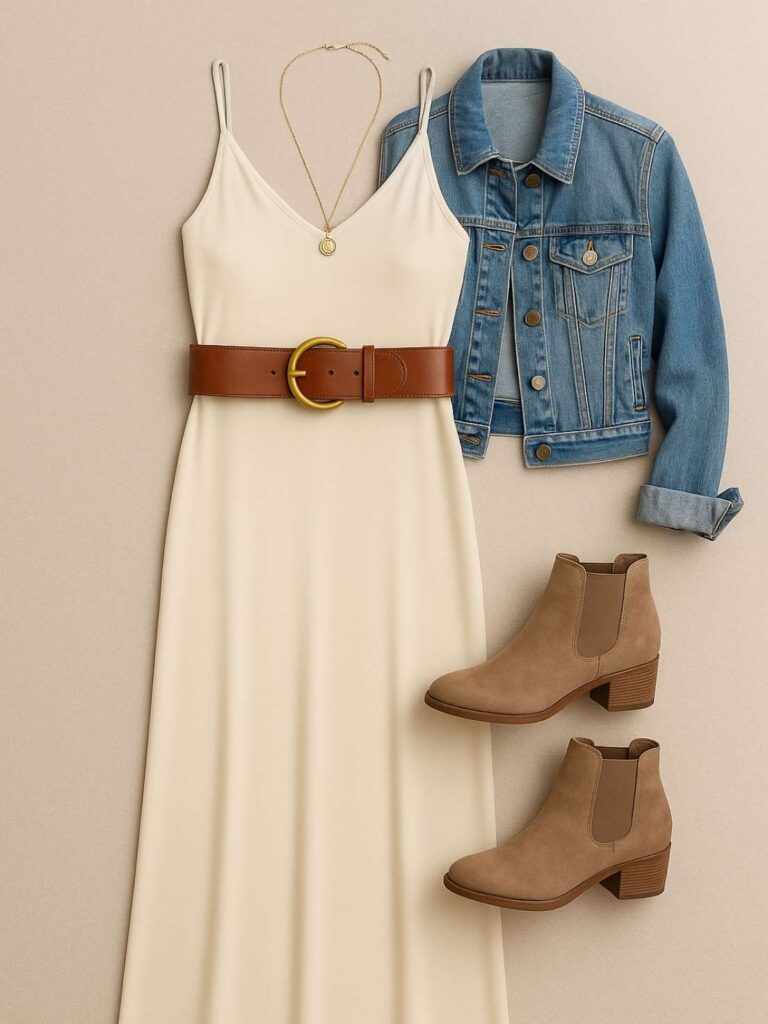
Conclusion
The magic of the maxi dress isn’t restricted to one height, weight, or body shape; it lies in its chameleon‑like ability to adapt. By understanding how fabric, cut, and clever styling interact with your unique proportions, you unlock a garment that can morph from beachy casual to cocktail chic with a simple accessory swap. So experiment—play with prints, test different belts, try that daring neckline—then step out knowing the only real “rule” is confidence. When you feel great, the dress looks great, and fashion’s most effortless silhouette becomes tailor‑made for you.
